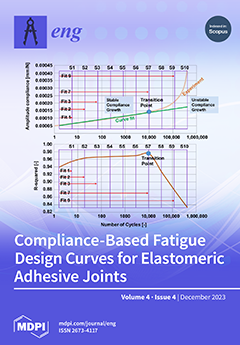Material extrusion is a popular additive manufacturing technology due to its low cost, wide market availability, ability to construct complex parts, safety, and cleanliness. However, optimizing the process parameters to obtain the best possible mechanical properties has not been extensively studied. This paper
[...] Read more.
Material extrusion is a popular additive manufacturing technology due to its low cost, wide market availability, ability to construct complex parts, safety, and cleanliness. However, optimizing the process parameters to obtain the best possible mechanical properties has not been extensively studied. This paper aims to develop ensemble learning-based models to predict the ultimate tensile strength, Young’s modulus, and the strain at break of PLA and PLA-CF 3D-printed parts, using printing temperature, printing speed, and layer thickness as process parameters. Additionally, the study investigates the impact of process parameters and material selection on the mechanical properties of the printed parts and uses genetic algorithms for multi-objective optimization according to user specifications. The results indicate that process parameters and material selection significantly influence the mechanical properties of the printed parts. The ensemble learning predictive models yielded an R
2 value of 91.75% for ultimate tensile strength, 94.08% for Young’s modulus, and 88.54% for strain at break. The genetic algorithm successfully identified optimal parameter values for the desired mechanical properties. For optimal ultimate tensile strength, PLA-CF was used at 222.28 °C, 0.261 mm layer, 40.30 mm/s speed, yielding 41.129 MPa. For Young’s modulus: 4423.63 MPa, PLA-CF, 200.01 °C, 0.388 mm layer, 40.38 mm/s. For strain at break: 2.249%, PLA, 200.34 °C, 0.390 mm layer, 45.30 mm/s. Moreover, this work is the first to model the process–structure property relationships for an additive manufacturing process and to use a multi-objective optimization approach for multiple mechanical properties, utilizing ensemble learning-based algorithms and genetic algorithms.
Full article




